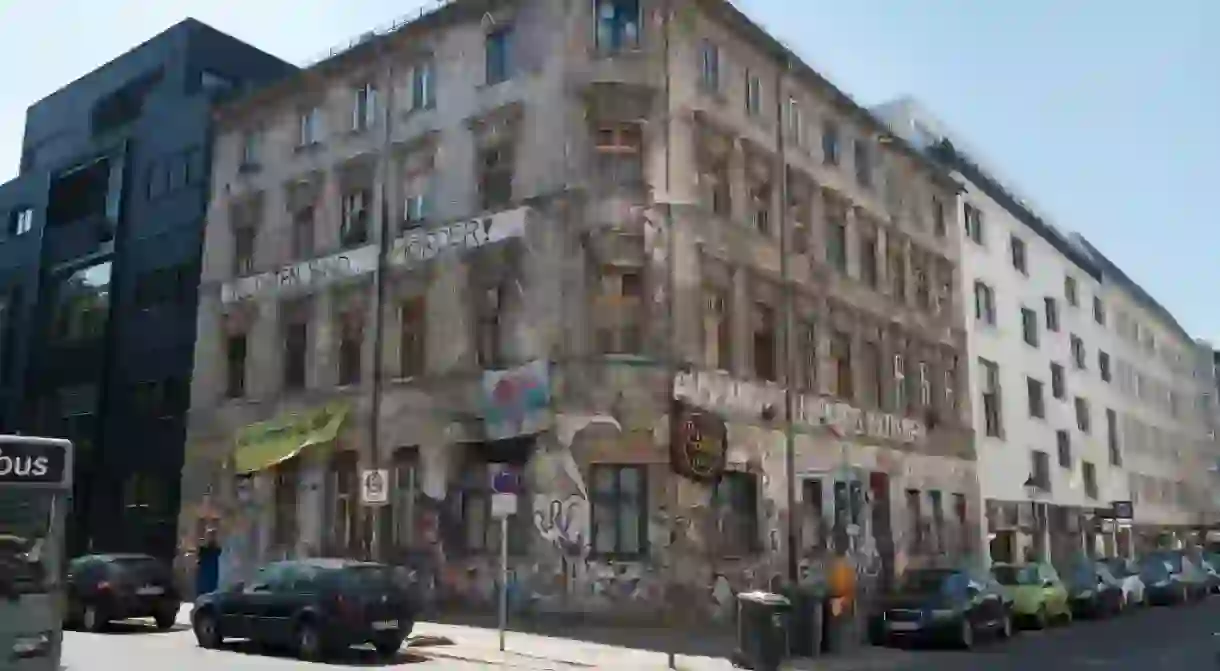Shifting Tides: The Rise And Fall Of Squatting Culture In Berlin

Due to various elements of its recent history, Berlin truly is a city like no other. Largely because of its post-war destruction, and both the rise and fall of the Berlin Wall, it has long been a breeding ground for countercultural movements of many kinds. Perhaps one of the most striking and unique of which is the large presence of squatters that have maintained a presence here. Yet, their existence is increasingly tenuous in recent times, something that reflects deeper shifts in our beloved city.
Unlike other urban areas, Berlin’s squat houses and their inhabitants are visible fixtures in the city.With signs condemning capitalism plastered to their shabby facades, these squat houses certainly aren’t easy to miss, and for the most part Berliners still continue to be unfazed by them. They are considered a distinct force in keeping Berlin weird, or at least less conventional in ways that most of its residents can appreciate.
Squatting rose to prominence in West Germany during the 1970s. In Berlin, this was particularly the case in the district of Kreuzberg. Squatters ran collectively governed microcosms complete with their own housing cooperatives, ‘people’s kitchens’, and print publications. These communities were typically united by politically charged agendas, oriented towards anti-Free Nationalist (Neo-Nazi), anti-capitalist, feminist, or other radical objectives.

It was this culture of activism that helped to keep the squats afloat. The Autonomen Movement’s tactics of direct action, for instance, safeguarded squatters from eviction or political persecution through demonstrations and the construction of police barricades around the squats themselves. With a stronghold in the West that endured after the fall of the wall, squatting culture seeped into the many abandoned buildings of eastern neighborhoods such as Mitte, Friedrichshain, and Prenzlauer Berg, including the famous Kunsthaus Tacheles. At this time, squatting was technically legal in these areas. Of course, its presumed legal status didn’t last long, as stability in the East was eventually regained and increasing numbers of squats were converted into conventional residences.

As is the case in most major cities, housing prices have since been on the rise as real estate developers set their sights on new investment opportunities. Even Berlin, despite its culture of social activism and its ‘poor but sexy’ motto, is falling victim to the grip of gentrification, the biggest enemy of squatting culture to date.
Indeed, it would seem that nearly every week there are reports in the news about another confrontation between the squatters and the state, usually via the police. Brunnenstraße 183 in Mitte, for instance, was closed in 2009 when 600 policemen stormed the building. Some of the city’s last squats, Rigaer 94 and the anarchist shop, M99 are currently witnessing their final days as well. Both police and landlords are cracking down on legal technicalities while legislators pass more laws that encroach on the squats’ existences.

In the case of Rigaer 94, such raids typically involve over 500 police officers, armed with dogs, as helicopters circle overhead. Meanwhile, the owner of M99, a disabled man in his late 50s, is scheduled to be evicted from the shop that also functions as his home.
These tactics are not without controversy and resistance, however. Many question whether these events are lawful or necessary. The inhabitants of Rigaer 94 are now facing an eviction which has proven to be unlawful, and the issue has made international headlines. Marches and demonstrations have been held in protest of the state’s aggressive efforts to oust the city’s last squatters, but unfortunately these acts of civil disobedience are not proving to be as effective as they were in the 1970s during the days of the Autonomen Movement.
As Berlin settles down and assumes a more solidified structure, taking after the socio-economic situations found in other major capitals, it’s not so surprising that its squatting culture would eventually dissipate as well. It is becoming less clear whether these anti-establishment refuges will have a place in Berlin as the city continues on its current social and economic trajectories, something that reflects a broader climate of change towards conventionality in a city that has always touted its edge.













